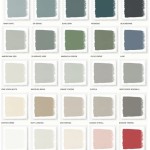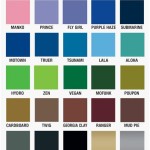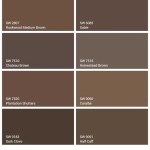Exterior Paint Colors For A House: A Comprehensive Guide
Selecting the right exterior paint color for a house is a significant decision that affects curb appeal, property value, and even the perceived age and style of the home. The exterior color acts as a visual introduction to the property, conveying a sense of style and personality. Choosing the appropriate palette requires careful consideration of various factors, including the house’s architectural style, its surroundings, and the desired aesthetic impact.
Exterior paint is not merely a cosmetic enhancement. It serves as a protective barrier against the elements, shielding the siding from sun damage, moisture, and temperature fluctuations. A quality exterior paint job can prevent wood rot, deter insect infestations, and minimize the risk of structural damage over time. Therefore, selecting a durable and weather-resistant paint formulation is as important as choosing the right color.
The process of selecting exterior paint colors should involve a systematic approach. It's crucial to consider the existing elements of the house, such as the roof color, brickwork, stone accents, and landscaping. These fixed elements provide a framework for the color palette and should be harmonized with the new paint choices. Ignoring these existing features can result in a disjointed and unappealing exterior.
Furthermore, it's advisable to test paint colors in different lighting conditions before committing to a full-scale application. The same color can appear drastically different under direct sunlight, shade, or overcast skies. Painting large swatches on various sides of the house and observing them at different times of day can provide a more accurate representation of the final outcome.
Understanding Architectural Style and Color Palettes
The architectural style of a house plays a crucial role in determining the appropriate color palette. Different architectural styles inherently lend themselves to specific color schemes that accentuate their unique features. Choosing a paint color that clashes with the architectural style can diminish the house's overall aesthetic appeal.
For example, Victorian-era houses are often characterized by ornate details and intricate trim work. These homes typically benefit from a palette of multiple colors, often employing three or more shades to highlight the architectural accents. Traditional Victorian colors include jewel tones, such as deep reds, greens, and blues, as well as softer pastels. These palettes emphasize the building's elaborate craftsmanship and historical character.
In contrast, Craftsman-style homes, known for their simplicity and natural materials, often benefit from earth-toned color schemes. Colors like browns, greens, and grays complement the natural wood elements and emphasize the connection to the surrounding landscape. Using muted and understated colors enhances the understated elegance of Craftsman architecture.
Modern and contemporary homes often embrace minimalist aesthetics. These homes tend to favor neutral color palettes, such as whites, grays, and blacks. These colors create a clean and sophisticated look while allowing the architectural design to take center stage. Bold accent colors can be used sparingly to add visual interest and prevent the exterior from appearing too stark.
Ranch-style homes, typically characterized by their single-story layout and low-pitched roofs, often benefit from warm and inviting color schemes. Earth tones, beiges, and soft yellows can create a welcoming and comfortable atmosphere. Adding a pop of color to the front door or shutters can enhance curb appeal.
The choice of color should also consider the era in which the house was built. Certain historical periods favor specific color palettes. Researching the typical colors used during the house's construction can provide valuable insights into choosing a historically accurate and aesthetically appropriate color scheme.
Considering the Surroundings and Landscape
The surrounding environment and landscape should also influence the choice of exterior paint colors. Harmonizing the house with its surroundings can create a cohesive and visually pleasing effect. Factors to consider include the natural vegetation, neighboring houses, and the overall aesthetic of the neighborhood.
If the house is located in a heavily wooded area, choosing colors that complement the natural foliage can create a seamless connection with the landscape. Greens, browns, and grays can blend well with the surrounding trees and shrubs. Conversely, if the house is situated in a more urban environment, bolder and more vibrant colors might be appropriate to make it stand out from the surrounding buildings.
It's also important to consider the color of neighboring houses. Choosing a color that clashes with the surrounding properties can disrupt the overall aesthetic harmony of the neighborhood. While it's not necessary to perfectly match the colors of neighboring houses, it's advisable to choose a palette that complements the existing color schemes.
The landscaping also plays a significant role in the overall appearance of the house. The colors of flowers, shrubs, and trees can either complement or clash with the exterior paint colors. Consider the existing landscaping when choosing a color palette to ensure a unified and visually appealing look.
Regional climate can also influence the choice of exterior paint colors. In warmer climates, lighter colors tend to reflect sunlight and keep the house cooler. In colder climates, darker colors can absorb heat and help to warm the house. However, dark colors can also fade more quickly in direct sunlight, so it's important to choose a paint with high UV resistance.
Understanding Color Theory and Undertones
A basic understanding of color theory is essential for selecting the right exterior paint colors. Color theory encompasses the principles of color mixing, color relationships, and the psychological effects of colors. Understanding these principles can help in creating a harmonious and visually appealing color palette.
The color wheel is a fundamental tool in color theory. It illustrates the relationships between different colors, including primary colors, secondary colors, and tertiary colors. Complementary colors, which are located opposite each other on the color wheel, create a high contrast and can be used to add visual interest. Analogous colors, which are located next to each other on the color wheel, create a more harmonious and cohesive look.
Understanding color undertones is also crucial. Undertones are the subtle hues that lie beneath the surface color. For example, a white paint may have a warm undertone (yellow or red) or a cool undertone (blue or green). Similarly, a gray paint may have a warm (brown or beige) or cool (blue or gray) undertone. Identifying the undertones of the existing elements of the house, such as the roof or brickwork, can help in choosing a paint color with a complementary undertone.
The psychological effects of colors should also be considered. Different colors evoke different emotions and associations. For example, blue is often associated with calmness and tranquility, while red is associated with energy and passion. Choosing colors that evoke the desired mood can enhance the overall atmosphere of the house.
Neutral colors, such as whites, grays, and beiges, are often used as a base for exterior paint schemes. These colors are versatile and can be paired with a wide range of accent colors. However, it's important to consider the undertones of neutral colors to ensure that they complement the other elements of the house.
Finally, remember to obtain samples of the chosen paint colors and test them under different lighting conditions before committing to a full-scale application. This will help in ensuring that the colors look as expected and that they create the desired aesthetic effect. Applying large swatches and observing them at different times of day will provide a more accurate representation of the final outcome.

Outdoor Paint Colors For House Modern Exterior Your Home

Exterior Paint Colors

How To Choose The Right Exterior Paint Colors

Exterior Paint Ideas And Home Inspiration Behr
:strip_icc()/blue-house-exterior-turquoise-door-c3a16493-81a54227d89e48198265c347152d5578.jpg?strip=all)
How To Choose Exterior House Colors So Your Home Looks Its Best

Painting The Exterior Of Our House With Projectcolor App Home Depot

How To Choose The Right Exterior Paint Colors

Best Ideas Of House Exteriors Color Schemes In 2024

Architectural Paint Colors Color Collections Sherwin Williams

Craftsman Exterior Paint Color Palettes House Colors
Related Posts








